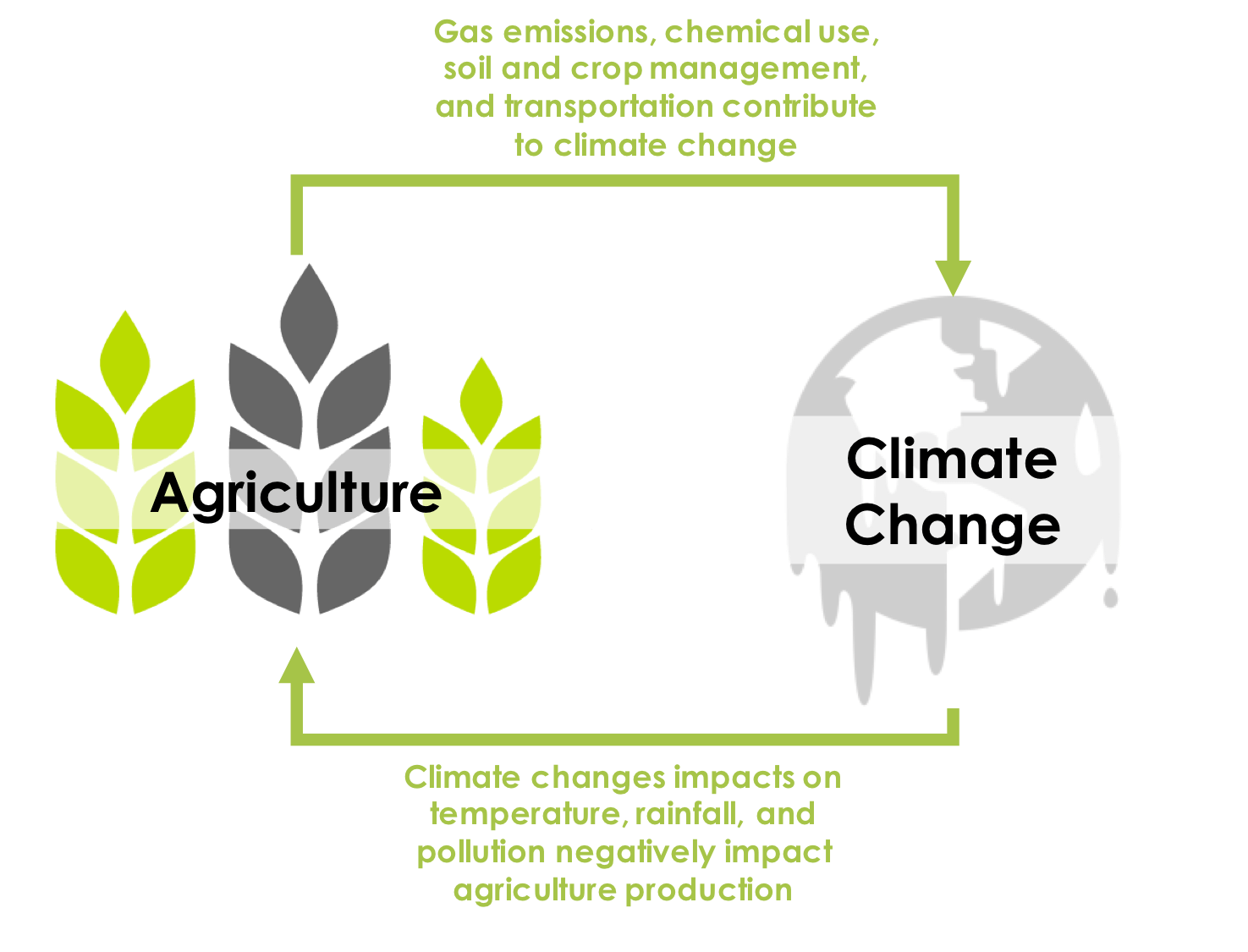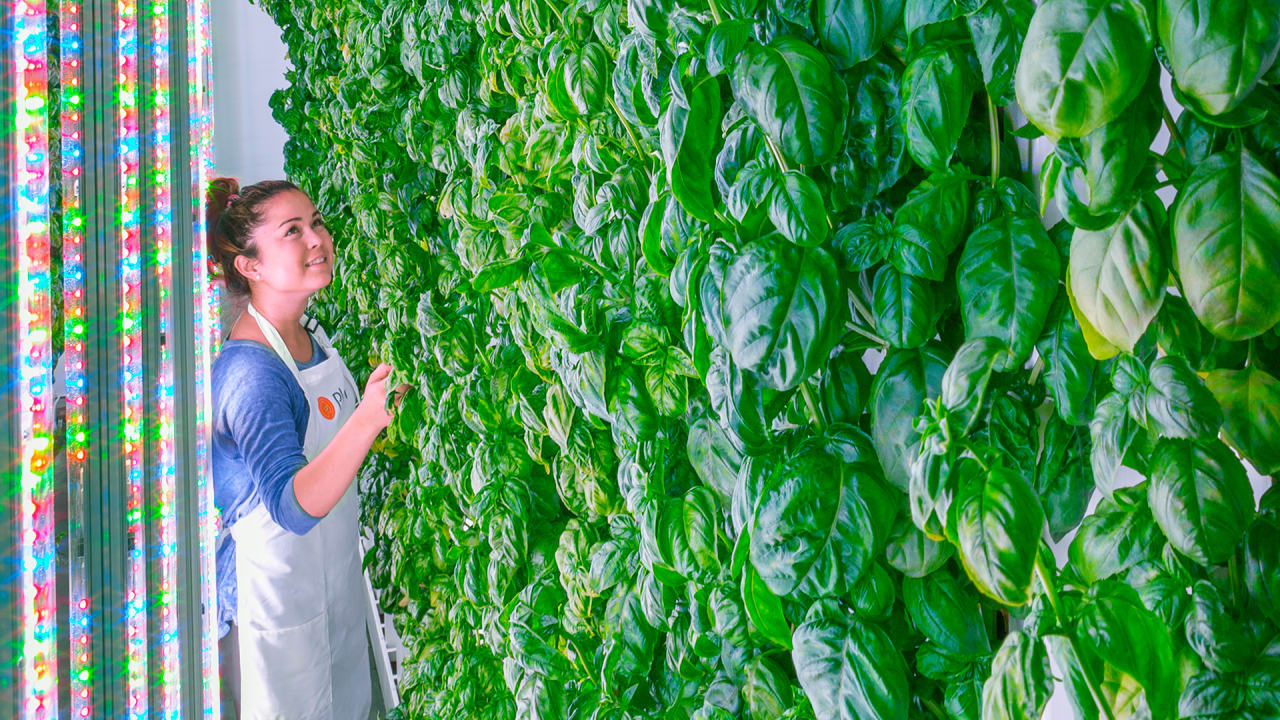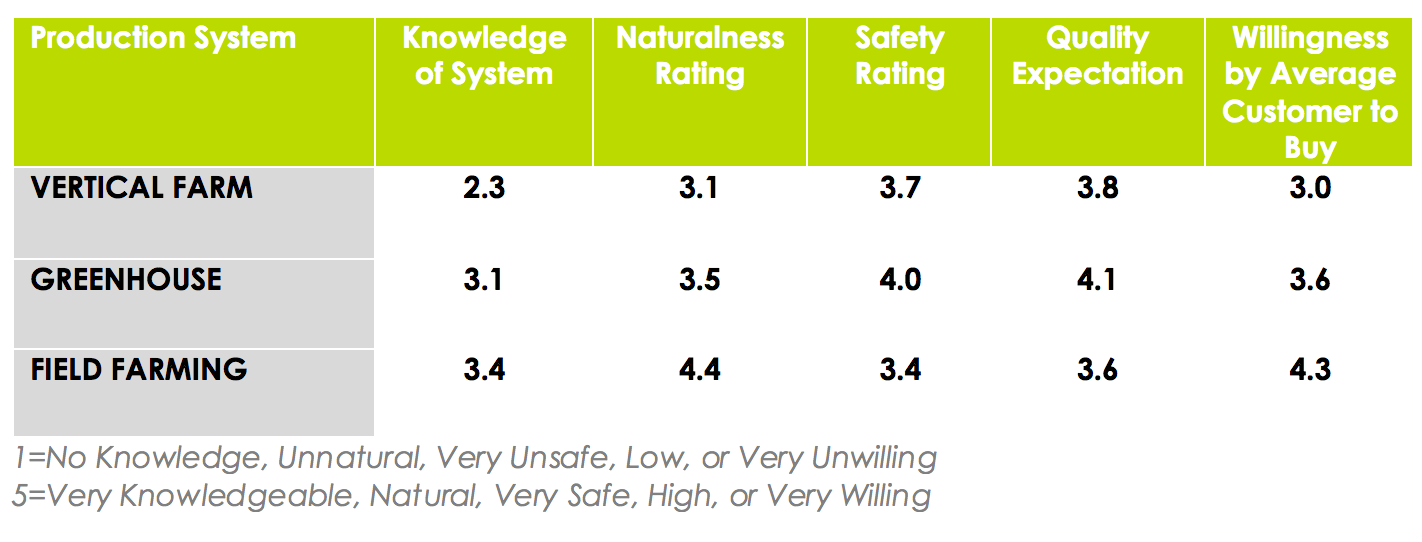CAN VERTICAL FARMING REDUCE AGRICULTURE’S IMPACT ON CLIMATE CHANGE?

Can Plenty, Inc. scale the vertical farming model and combat agriculture's impact on climate change?
CLIMATE CHANGE AND AGRICULTURE
Over half of the world population lives in cities, and this figure is projected to rise to two-thirds in by the middle of this century[1]. The rise in urbanization has distanced people food sources, increasing the length of the food supply chain[2]. More consumers are become farther away food supplies, raising concerns around agriculture’s impact on climate change[3],[4], in particular:
- Transportation: food supply chains are lengthening, increasing the number of food-miles[5], and hence, transportation emissions.
- Water consumption: centrally, mass-produced agriculture exacerbates water consumption in communities near the beginning of the supply chain.
- Preservatives and chemicals: for food to survive in a lengthened supply chain, preservatives are used, which can harm the environment.
Not only does mass-agriculture have a negative impact on climate change, climate change also has a negative impact on agriculture productivity. Rising temperatures, rainfall volatility, and pollution complicate agriculture production (see Figure 1).
Figure 1. Agriculture and Climate Change Negative Cycle1
PLENTY
Plenty, a San Francisco based company aims to combat agriculture’s impact on climate change. They are testing hydroponic, indoor, vertical farming techniques that will allow for more urban food production. They are largely focused on producing fruits and vegetables whose perishability suffers from a long food supply chain. Plenty’s solutions combat the above three problems in the following ways:
- Transportation: Plenty shortens the food supply chain by producing food in cities where it will be consumed, reducing the need for food transportation.
- Water consumption: hydroponic farms recycle water used in the production system; they use >90% less water than traditional agriculture[6].
- Preservatives and chemicals: Plenty’s model brings food production closer to food consumption, eliminating the need to use preservatives.
Figure 2. One of Plenty’s Vertical Farm Growing Systems[7]
GOALS
Short-Term
Hydroponic vertical farming an urban food supply solution has been around for less than two decades, leaving a lot of room for innovation and optimization of growing systems. Plenty’s goal in the next two years is to test, refine, and optimize growing systems to make urban vertical farming viable and economical. To compete with organic, local, and other premium produce products, Plenty is focusing on:
- Product Innovation: Plenty is working to create tasty products that can command a price premium.
- Business Viability: Plenty has a lofty goal of building a vertical farm near every large city in the world. To do this, they need to prove out vertical farming’s financial sustainability. They’re striving for high fixed asset utilization and lowered variable costs. To control costs for a multi-farm network, Plenty is working to create economies of scale by creating relationships with suppliers and customers that can be leveraged across a network of farms[8].
Medium-Term / Long-Term
In the medium and long-term, Plenty wants to build a vertical farm near every large city with at least 1 million residents[9]. Plenty’s goal is to find urban real estate just outside of large cities near food distribution networks to reduce required transit miles.
OTHER AREAS OF FOCUS
Consumers are less familiar with the concept of food being grown in an indoor warehouse compared to other forms of agriculture (Table 1). Even if Plenty succeeds in proving out the concept from a production innovation and cost efficiency standpoint, they will still need to generate consumer demand for their products. As a key innovator in this space, I recommend they take a leading role in educating the general population (especially in urban areas) about the benefits of vertical farming. For example, Plenty could do a roadshow to educate key potential future customers (e.g., Whole Foods) on the environmental and health benefits of vertical farming.
Table 1. Consumer Perceptions by Production System[10]
QUESTIONS
Plenty’s ambitious goal of bringing vertical farmed produce to urban areas could address many environmental concerns. However, several questions still remain.
- Viability: is the vertical farming model a viable business? Can their production become efficient enough to offset the high costs of urban real estate and high-tech hydroponic assets?
- Share: can the vertical farming model truly compete with other forms of agriculture that benefit from economies of scale?
Word Count: 793
[1] “Urbanization and Development: Emerging Futures,” 2016, UN Habitat, https://unhabitat.org/wp-content/uploads/2014/03/WCR-%20Full-Report-2016.pdf, accessed November 2017.
[2] Gokran, Samir, Thyagaraj S. Kuthambalayan, “Analysis of challenges inhibiting the reduction of waste in food supply chain,” August 24, 2017, Journal of Cleaner Production.
[3] “Agriculture and Climate Change,” European Environment Agency, https://www.eea.europa.eu/signals/signals-2015/articles/agriculture-and-climate-change, accessed November 2017.
[4] Wong, Joyce and Ryan Schuchard, “Adapting to Climate Change: A Guide for the Food, Beverage, and Agriculture Industry” Business for Social Responsibility, https://www.bsr.org/reports/BSR_Climate_Adaptation_Issue_Brief_Food_Bev_Ag2.pdf, accessed November 2017.
[5] The number of miles food travels from its origin to the end consumer.
[6] Plenty Inc. 2017. http://plenty.ag, accessed November 2017.
[7] Plenty Inc. “Press.” https://www.plenty.ag/press/, accessed November 2017.
[8] Roberts, David, “This company wants to build a giant indoor farm next to every major city in the world,” Vox News, November 8, 2017, https://www.vox.com/energy-and-environment/2017/11/8/16611710/vertical-farms, accessed November 2017.
[9] Ibid.
[10] Coyle, Bradford and Brenna Ellison, “Will Consumers Find Vertically Farmed Produce ‘Out of Reach’?” Agriculture and Applied Economics Association, 2017, https://ageconsearch.umn.edu/bitstream/253382/2/cmsarticle_567.pdf, accessed November 2017.






Great topic. It is very clear that society needs to be more efficient in terms of food production.
I am sure that the costs will continue to come down as this becomes more popular. But until that happens, should innovators seek out public funding to subsidize the costs (similar to the solar industry)? Also, what plans do you have for all of the “freed-up” farmland?
Food security and scarcity will become a major topic in the next decade as land and resources become more limited. With that said however, it might be very interesting to separate between the types of produce that command different prices and value to the consumer. We know that urban farming is restricted by high capex, while space is generally limited. Growing low value products may now be suitable compared to letting farmers grow them in natural settings. However, high value produce such as certain fruits and vegetables (ie. kale, asparagus, mushrooms, sweet melons) might make more sense on a value per space metric. In attempting to tackle this massive problem, it might be interesting to solve a problem for a specific produce first before tackling the even larger problems faced by the mass market.
Great topic! Food security is a not often discussed but critically important topic. In particular with regards to the looming consequences of global warming, ensuring that our communities have safe, secure access to food sources that don’t further degrade our environment is very important. Plenty’s approach of providing premium ingredients that can be charged a premium is an interesting strategy. Much like early Tesla, where they developed their core technology using a luxury low production run roadster, plenty is doing all the early heavy lifting using a high end client. This will in turn allow them to “grow” and scale quickly, enabling them to serve more markets effectively.
I would be concerned about vertical farmings ability to compete with low cost industrialized agriculture. Particularly since the current food supply chain is optimized to service large mono-culture farms. This goes to the earlier point of the importance of getting a foothold serving the premium market. My other concern is whether or not vertical farming can be developed to grow larger quantity staple crops in an economic way.
Great article. I think you hit the nail on the head with you second question about whether this can be competitive with other agricultural players that benefit from scale. I’m not thinking about it so much from the perspective of passing higher operations cost to consumers (the idea of a visible / healthier food supply chain is a very attractive one to environment and health conscious consumers) but more from Plenty’s ability to scale their operations and meet demand.
I am excited about vertical farming after reading your article! First, as I think about the large variety of specialty products that are available these days, I see a great opportunity if Plenty is able to make them viable vertical farm crops. Many of these specialty products are grown in confined geographies (such as almonds), and the supply can be vulnerable to price inflation when those geographies are impacted by inclement weather. If crops such as these are adapted to vertical farming, then risk of climate change impact on supply can be greatly reduced (in addition to saving some of CA’s water!)
Another possibility that excites me is that I think vertical farms can be scalable as well. Although right now they are fairly small and require a labor intensive process, I can see a future where massive warehouses are filled with towers of vertical crop rows. The digitalization megatrend and the integration of automation and machine learning could be an integral piece of making the vertical farm a viable business model. Farmers are already using remote sensing data from drones to make harvesting decisions. These same technologies can be used within the scaled vertical farm to monitor crops and make automated harvesting decisions.
Vert interesting article! I agree with Bumper the Cat and am excited by the ability to scale vertical farming technique. However, given the newness of the technology, I would be curious as to how the quality of food grown through vertical farming compares traditional methods. I think this is the first place they should focus since if the quality is not on par, I am not sure how they will be competitive, regardless of cost.
Great topic! Also want to send a shoutout to Bumper the Cat for bringing up very valid points and suggestions for scalability.
In response to your questions:
QUESTION 1- Viability: is the vertical farming model a viable business? Can their production become efficient enough to offset the high costs of urban real estate and high-tech hydroponic assets?
QUESTION 2- Share: can the vertical farming model truly compete with other forms of agriculture that benefit from economies of scale?
I don’t see why not. If anything, I believe a key advantage of vertical farming lies in its space utilization (they claim to produce more than 100x for a specific plot of land).
Although there’s been a wave of bankruptcies in the vertical farming industry lately, I think there is potential for growth if a company such as Plenty focuses on producing high-value product at lower operational cost than normal. A big issue I see is the fact that their product is unlikely to command a premium over regular or organic produce, so honing in and exploring what makes sense to produce on a large scale should be key priority (lucky for Plenty, they have ‘plenty’ of money aka $200M+)
I also wanted to note that a big cost element for vertical farming comes in the form of energy cost (for lighting). As time passes, this impact will be reduced. As of now, I believe there is potential for vertical farms to perhaps ask for government assistance and/or collaborate with outside stakeholders to reduce this cost.
I wonder whether the industry is seeing this ‘healthy’ form of competition in the wrong light. As I wrote in my essay about ‘artificial’ meat, I see massive synergies/knowledge exchange happening if vertical farms start involving large corporations in their journey.